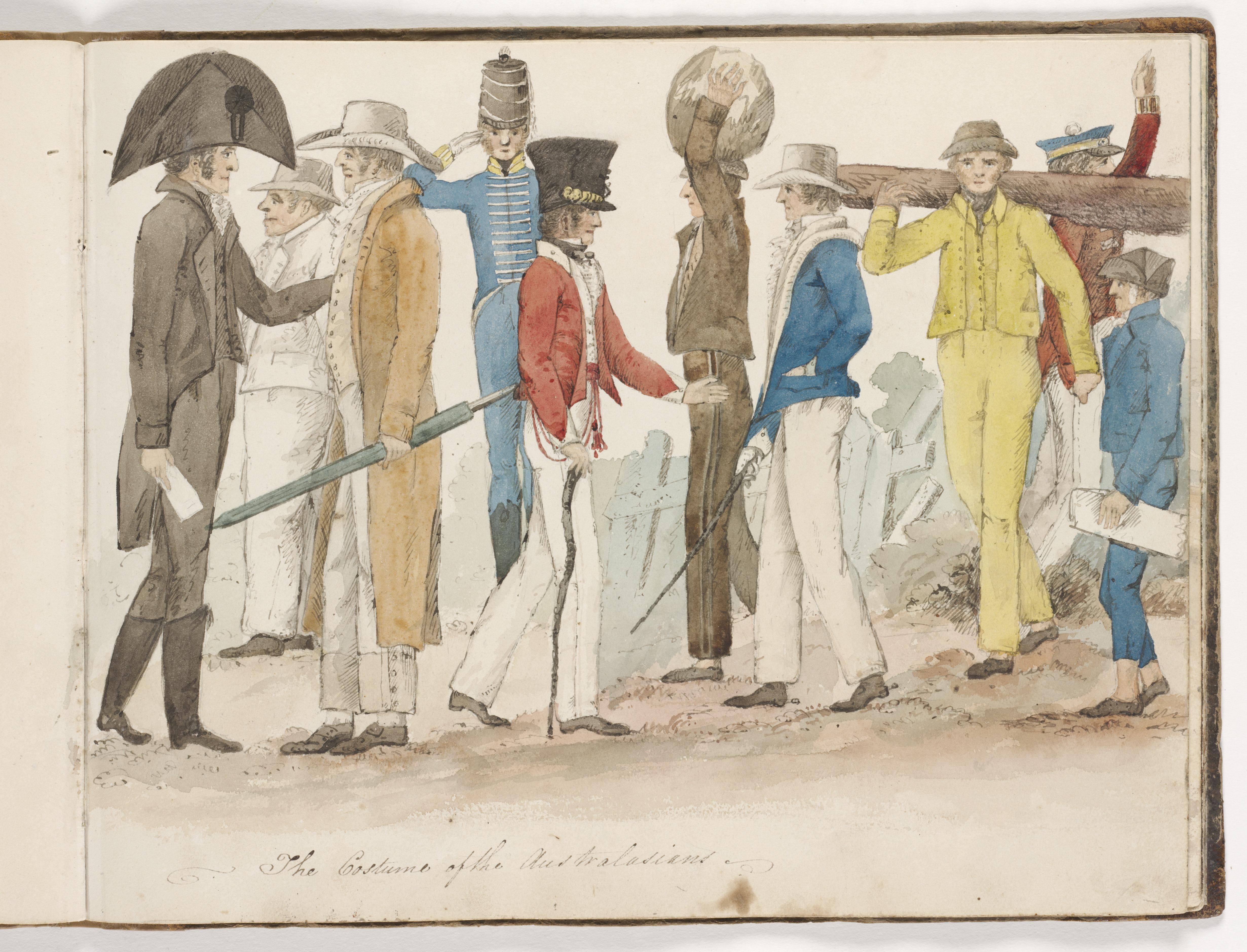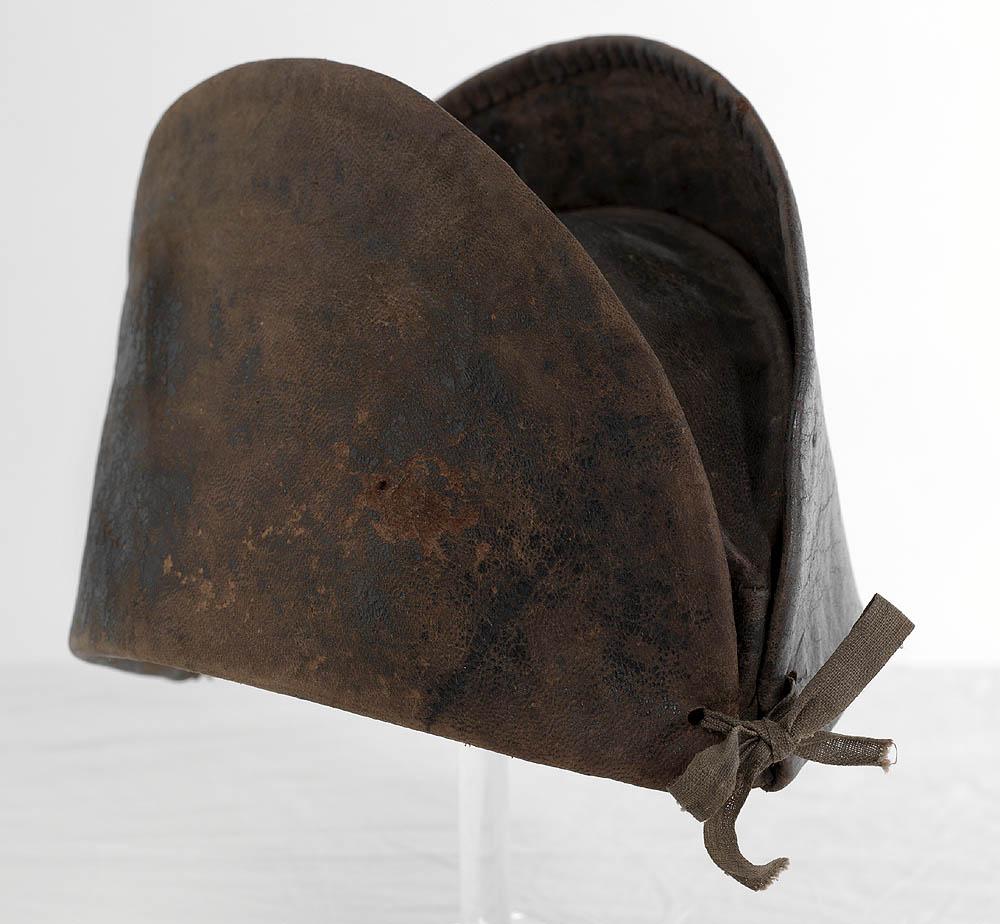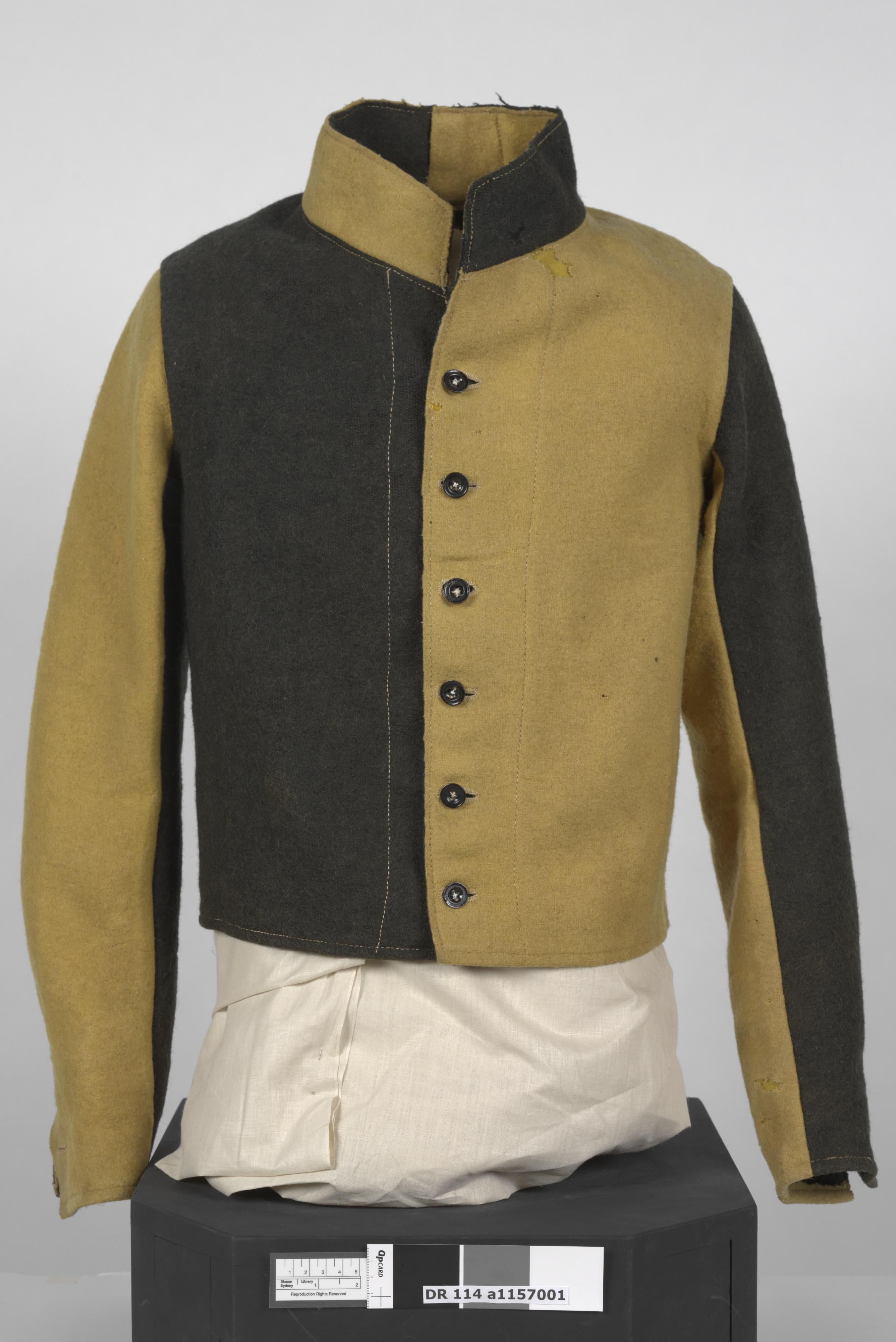Convict clothing
Students investigate the clothing of the First Fleet convicts, explore the unusual associated challenges they faced and discover skills Aboriginal people and colonists had in common.
Key inquiry question #1
Why did Europeans settle in Australia?
Key inquiry question #2
What was the nature and consequence of contact between Aboriginal and/or Torres Strait Islander peoples and early traders, explorers and settlers?
Learning intention
Students are learning to:
- analyse written primary sources and images to learn about convict clothing
- recognise the aspects of day-to-day life of the First Fleet convicts
Success criteria
Students will be successful when they can:
- explain the clothing challenges for everyone in the First Fleet
- identify the types of clothes worn by First Fleet convicts
- describe the skill Aboriginal people and colonists had in common
Student Activities
Clothing the Convicts
Students analyse the clothing convicts wore on the journey to NSW and consider clothing as communication.
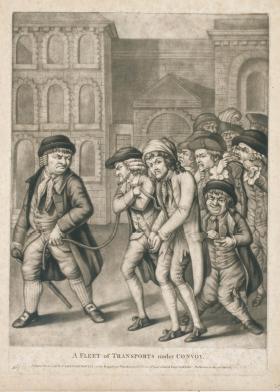
Worn Out Clothing and Repairs
Students begin to understand the challenge of deteriorating clothing for everyone in the colony.
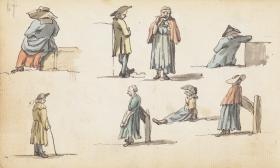
Sewing Across Cultures
Students find that both colonists and Aboriginal people developed the skill of sewing.
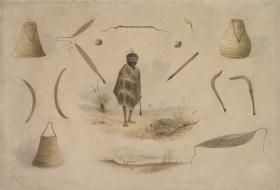
Feet on the Ground
Students explore how shoes became an issue for everyone from the First Fleet.
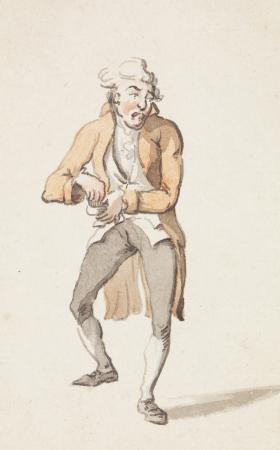
Clothing vs Fashion
Students compare the clothing of convicts and soldiers and their wives.
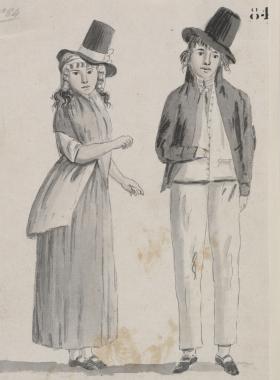
Look at Me
Students investigate personal grooming for people living in the colony.
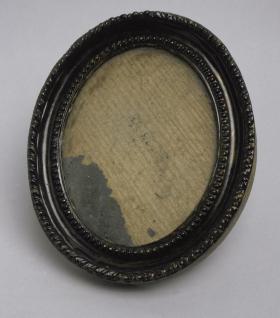
Clothes and Crime
Students examine clothing crimes and how some convicts wore clothing as punishment.
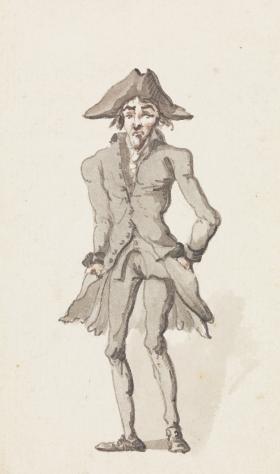
NSW Syllabus for the Australian Curriculum History K-10
A student:
- HT2-3 describes people, events and actions related to world exploration and its effects
- HT2-4 describes and explains effects of British colonisation in Australia
- HT2-5 applies skills of historical inquiry and communication
Stories of the First Fleet, including reasons for the journey, who travelled to Australia, and their experiences following arrival (ACHHK079)
Students:
- identify reasons for the voyage of the First Fleet and explain why various groups were passengers
- describe the establishment of the British colony at Port Jackson
- using a range of sources, investigate the everyday life of ONE of the following who sailed on the First Fleet and lived in the early colony: a soldier, convict, ex-convict, official
Comprehension: chronology, terms and concepts:
- respond, read and write, to show understanding of historical matters
- use historical terms
Analysis and use of sources:
- locate relevant information from sources provided
Perspectives and interpretations:
- identify different points of view within an historical context
Empathetic understanding:
- explain how and why people in the past may have lived and behaved differently from today
Research:
- pose a range of questions about the past
- plan an historical inquiry
Explanation and communication:
- develop texts, particularly narratives
- use a range of communication forms (oral, graphic, written) and digital technologies
Continuity and change: changes and continuities due to British colonisation of Australia.
Cause and effect: reasons for a particular historical development
Perspectives: different points of view within an historical context
Empathetic understanding: how and why people in the past may have lived and behaved differently from today.
Significance: the importance and meaning of national commemorations and celebrations, and the importance of a person or event.
Contestability: historical events or issues may be interpreted differently by historians, eg British 'invasion' or 'settlement' of Australia.
Cross-curriculum priority:
- Aboriginal and Torres Strait Islander histories and cultures
General capabilities:
- Critical and creative thinking
- Ethical understanding
- Intercultural understanding
- Literacy
Stories of the First Fleet, including reasons for the journey, who travelled to Australia, and their experiences following arrival (ACHASSK085)
- investigating attitudes to the poor, the treatment of prisoners at that time, and the social standing of those who travelled to Australia on the First Fleet, including families, children and convict guards
- investigating daily life in the Botany Bay penal settlement and challenges experienced by the people there and how they were managed.
The nature of contact between Aboriginal and Torres Strait Islander Peoples and others, for example, the Macassans and the Europeans, and the effects of these interactions on, for example, people and environments (ACHASSK086)
- exploring the impact that British colonisation had on the lives of Aboriginal and Torres Strait Islander Peoples (dispossession; dislocation; and the loss of lives through conflict, disease, loss of food sources and medicines)
- considering whether the interactions between Europeans and Aboriginal and Torres Strait Islander Peoples had positive or negative effects
- examining paintings and accounts (by observers such as Watkin Tench and David Collins) to determine the impact of early British colonisation on Aboriginal Peoples' Country.
Additional Information
The following information supports the above activities. Read the activities first.
There is little physical evidence of clothing from the settlement that dates back as far as 1788.
Activity 1 answers and further information
Q: Why do you think the clothes were called ‘slops’?
A: Slops were ready made clothes, rather than custom made. They didn’t usually fit very well, and felt ‘sloppy’ so the word ‘slops’ was used.
Hats
Q: Why did everyone have to wear a hat?
A: Hats were required to be worn outside as part of societal etiquette. It was just accepted that everyone wore a hat outside.
Q: Did hats have any other purpose?
A: Hats provided protection against the elements, whether that was sun or wind or rain or just keeping your ears warm. Your hat also indicated your status in society, particularly in colonial Australia. Think about the hat worn by the Governor. Hats could be a form of communication and with decoration could be individualised. That is more relevant later when ex-convicts had income and shops had stock of laces and ribbons.
Convict clothing and hats later in colonial history
Clothing was a way in which colonists could quickly determine class position and therefore who was socially acceptable or not. That convicts were not required to wear distinguishing clothing disturbed many people. Until the mid-1820s most convicts were allowed to live in their own homes and were not required to wear a uniform.
The well-known image, below, is from 1817 and does NOT reflect the First Fleet convict experience. In this image you can see convicts and gentlemen all in the one image and the differences in class are very visible. The yellow uniform was used as a form punishment for convicts and were called ‘canary men’.
The image from 1829, below, also does not reflect the experience in the early colony as First Fleet convicts did NOT wear clothing with printed arrows. The free settlers wanted to be distinguished from convicts and the clothing with arrows made the convicts easily identifiable. The image below displays the short coats that indicated your working class status. Only the middle class people could afford to wear longer tailed coats. Sydney at this time was reflecting the class differences in England and was a society where your class level and reputation were important.
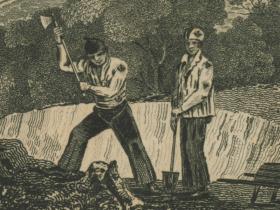
More photographs of this item, from the collections of the State Library of NSW, can be seen here.
Activity 2 answers and further information
Underwear
Most women in Britain do not appear to have worn underpants or ‘drawers’ until the 19th century. They wore shifts that were lightweight linen or cotton garment worn under their dress, a bit like a petticoat dress. Around the 1830s women’s ‘drawers’ (large cotton underpants to your knee) were increasingly adopted in England as regular daywear. It would have taken a few years for the fashion of wearing ‘drawers’ to reach the colonial outpost of Sydney and convicts would not have been able to afford to purchase any new fashionable items of clothing. Once they were available, ex-convict women with businesses or paying jobs may have been able to afford them or purchase fabric to make them.
Q: What is osnaburg?
A: Osnaburg at this time in history was a cheap coarse fabric made of roughly woven unbleached linen. It was used for sacks as well as clothing.
Q: What would the children be wearing?
A: Children would wear adult ‘slops’ that would have been too big for them. Mothers would sew clothing for their babies/toddlers from the adult clothing or scraps of old fabric. Perhaps they even just wrapped their babies in adult clothing.
Clothing challenges continued…
The clothing challenges of the colony continued for many years as more people arrived but brought few clothing and fabric supplies with them. Access to clothes fluctuated and ten years later, in 1798, the situation for convicts was worse! Governor Hunter wrote to the British Government so concerned that the colony’s convicts were nearly naked.
Activity 3 answers and further information
Q: What uses are there for the possum-skin cloak?
A: For warmth, to sleep in, for carrying babies, for recording stories in the patterns and markings and to maintain and preserve culture. The cloaks could be worn skin to skin or reversed having the fur to skin.
Q: None of the possum was wasted. How do you think Aboriginal people used the other parts of the possum?
A: Meat for eating, whole dried skins could be used for water carrying, bones used for carving, hair and possum fur were entwined to create string and smaller pieces of possum-skin was used for body decoration, such as, armbands and headbands.
Activity 6 answers and further information
Q: What is mostly missing from the looking-glass in the photo?
A: The reflective ‘mirror’ surface is mostly missing from this oval shaving mirror. It is in a wooden frame, 17.3 x 14.5 cm.
Q: What is the difference between a looking-glass, a spy-glass and a night-glass?
A: A looking-glass is a mirror. A spy-glass is a small telescope. A night-glass in a telescope to use at night.
Activity 7 answers and further information
Q: What does R.S.G. stand for?
A: Receiver of Stolen Goods.
Q: What does her head having been previously deprived of its natural covering mean?
A: Her head was shaved.
In 1810 Governor Lachlan Macquarie directed that convicts who committed further crimes wear a two-tone jacket of black and white so they could be easily identified. This was referred to as the Magpie uniform. Below is an image of a two-colour jacket worn by convicts in about 1840. The two colours on the jacket made the wearer identifiable and as such used as punishment. It was used as a form of humiliation as the offending convict could be identified in public and less prone to an escape attempt. Another reason for introducing humiliating uniforms was that colonists were not very happy that people couldn’t tell who was a convict and who was free. Convicts became easily identifiable in these jackets!
Source list for images details in student activities
Clothing the Convicts
Image 1: Augustus Earle, Views in New South Wales and Van Diemens Land : Australian scrap book 1830, 1830
Image 2: A Fleet of Transports under Convoy / mezzotint print published by Carrington Bowles, c.1788
Image 3: Black-eyed Sue, and Sweet Poll of Plymouth taking leave of their lovers who are going to Botany Bay, 1794 / Publishers Laurie & Whittle, 1794
Image 4: A Fleet of Transports under Convoy / mezzotint print published by Carrington Bowles, c.1788
Image 5: Eugene Guerard, Cabbage Trees near the Shoalhaven River, N.S.W., 1860 / Eugene von Guerard [unframed], 1860
Image 6: Joy Lai, Cabbage palms, Kamay National Park, Sydney: State Library of NSW, 2020
Image 7: William Strutt, A collection of drawings in watercolour, ink and pencil : illustrative of the life, character & scenery of Melbourne 1850-1862. Third series / drawn by William Strutt, 1850-1862
Image 8- 10: Artist unknown, Watercolour drawings of sentimental genre scenes, ca. 1760-1800, ca 1760-1800
Worn Out Clothing and Repairs
Images 1-14: Artist unknown, Watercolour drawings of sentimental genre scenes, ca. 1760-1800, ca 1760-1800
Sewing Across Cultures
Image 1: Samuel Thomas Gill, Australian aborigines, their implements & weapons, c.1845 / sketched by Samuel Thomas Gill, ca. 1845
Feet on the Ground
Image 1: Black-eyed Sue, and Sweet Poll of Plymouth taking leave of their lovers who are going to Botany Bay, 1794 / Publishers Laurie & Whittle, 1794
Image 2: A Fleet of Transports under Convoy / mezzotint print published by Carrington Bowles, c.1788
Image 3: Black-eyed Sue, and Sweet Poll of Plymouth taking leave of their lovers who are going to Botany Bay, 1794 / Publishers Laurie & Whittle, 1794
Image 4: Felipe Bauza, 5. Convicts in New Holland, 1789-1794
